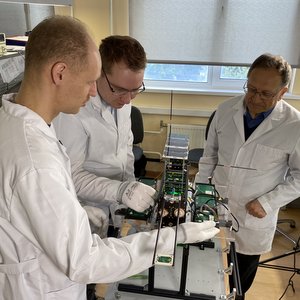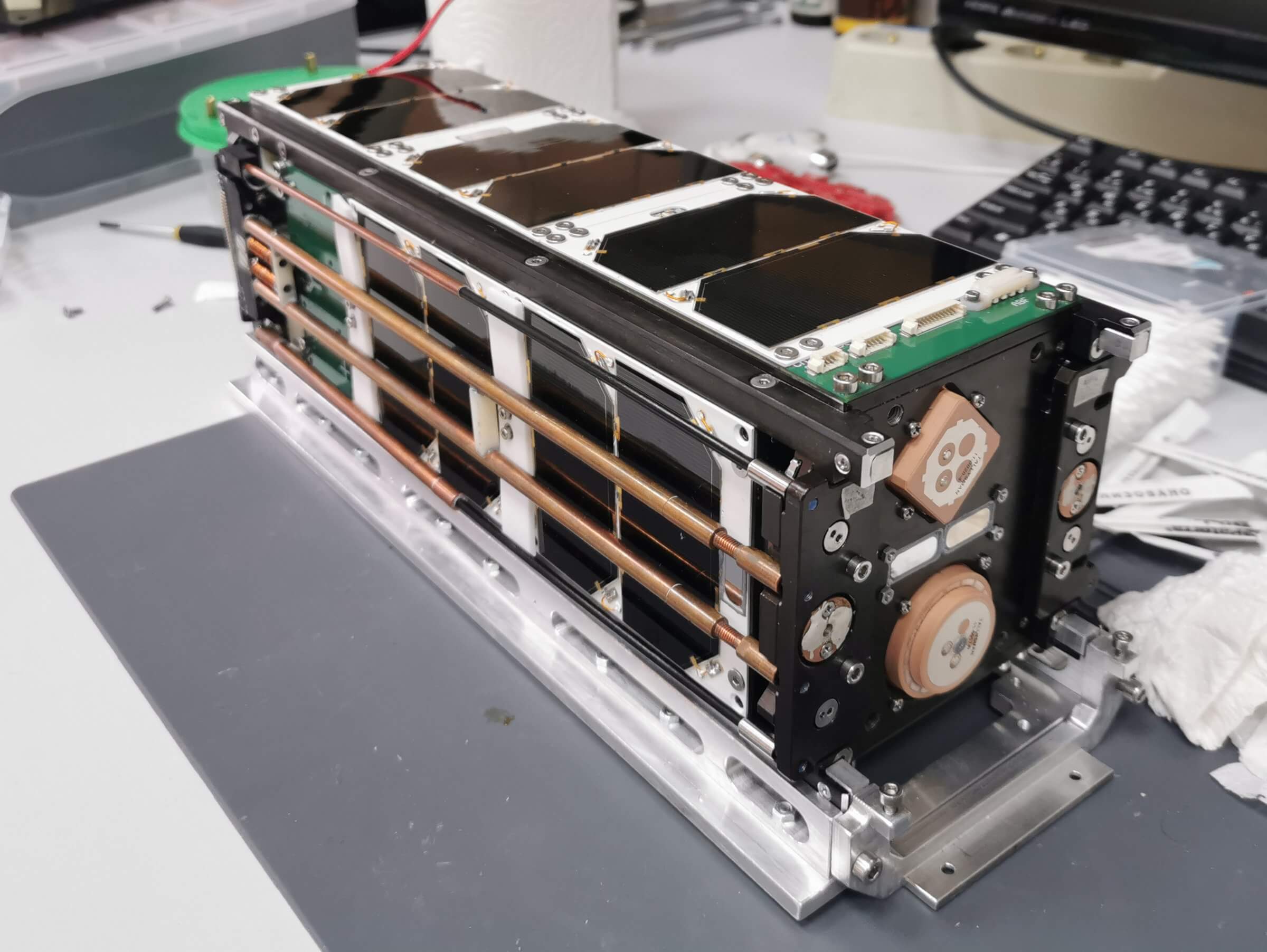“SamSat-ION nanosatellite designed and assembled at the University successfully passed all tests and is ready for launch. The Roscosmos commission included our nanosatellite into UniverSat-2023 cluster of small spacecraft. It is expected that the launch can take place in the first quarter of next year,” said Professor Igor Belokonov, head of the Inter-University Department of Space Research at Samara University.
The nanosatellite is to be launched into a solar synchronous orbit at the altitude of about 550 km. Active life of the nanosatellite will be at least one year. Together with the Samara satellite, the cluster also includes the launches of spacecraft developed by four other universities – Bauman Moscow State Technical University, MISIS National University of Science and Technology, Moscow State University Nuclear Physics Research Institute, and Novosibirsk State University. All the payload installed on the satellites received positive feedback from the experts of Fedorov Institute of Applied Geophysics and the Russian Federal Service for Hydrometeorology and Environmental Monitoring (Rosgidromet).
About Satellite
According to Igor Belokonov, SamSat-ION nanosatellite was fully developed by the Inter-University Department of Space Research and R&D laboratory “Advanced fundamental and applied nanosatellite-based space research” in the framework of the University’s participation in the consortium of the Russian universities and scientific organizations. All onboard systems of the spacecraft have been developed and manufactured in the Department’s Centre for nanosatellite technologies.
The ground tests included the simulation of in-orbit conditions in a thermal vacuum chamber and conditions of active phase of launch into orbit by a launch vehicle on a vibrodynamic rig in accordance with the test program submitted by Lavochkin Science and Production Association, the developer of the Fregat upper stage which will be used to launch the satellite. The power supply system was tested with a solar simulator, and the motion control system was tested on a rig using an air suspension, which puts the satellite in conditions close to weightlessness. In order to determine the inertial characteristics and mass center position – the parameters crucial for controlling angular motion – a unique patented test bench developed and made at the Department was used.
For research purposes, SamSat-ION will carry a navigation receiver, a remote magnetometer on an innovatively designed arm, and a plasma parameter sensor developed by Samara University to measure the characteristics of plasma along the orbit of the satellite (the sensor was created in collaboration with the Institute of Applied Physics of the Russian Academy of Sciences).
While in orbit, SamSat-ION will obtain scientific data necessary to study wave processes in the plasma along its flight trajectory. “Fresh data on the state of ionosphere are vital for such industries as satellite communication, navigation, meteorology, and are especially relevant for polar and subpolar regions where ionospheric disturbances from solar activity are quite significant. Therefore, the data obtained by the nanosatellite will be indispensable to further progress in the Arctic and Antarctic exploration,” stressed Igor Belokonov.
During the flight, the possibility of ionospheric tomography based on the signals of the Russian satellite navigation system GLONASS will be tested using a dual-frequency navigation receiver developed by the University. The data will be processed using algorithms developed as part of a joint grant provided by the Russian Foundation for Basic Research and the Belarusian Foundation for Fundamental Research titled “Theoretical Foundations of Studying Wave Processes and Phenomena in the Ionosphere Using Signals of Satellite Radio Navigation Systems”. It is the first joint scientific project between Russia and Belarus initiated by Samara University and completed in 2022.
Comprehensive studies of plasma characteristics and delays in the propagation of radio signals from satellites of the GLONASS Russian navigation system will help understand the mechanisms of processes occurring in the ionosphere. This solution will be crucial for predicting possible failures in the operation of radio communication systems, correcting errors and improving the accuracy of positioning systems on Earth. Besides, the understanding of physical processes occurring in the ionosphere opens up opportunities for new promising technologies for information transmission.
For reference:
1) Ionosphere is the upper layer of the Earth’s atmosphere saturated with charged particles, whose concentration depends on the solar activity and affects the propagation of radio waves, having a noticeable impact on the performance of various technical systems. Knowledge of the state of ionosphere plays a central role in satellite navigation and communication.
2) The agreement on the consortium of Russian universities and scientific organizations to create a constellation of nanosatellites for studying the Earth’s ionosphere was concluded in 2018. The consortium was initiated by Samara University. The idea to bring leading Russian universities together for the joint study of ionosphere was supported by the Institute of Applied Geophysics of the Russian Meteorological Agency and the Space Research Institute of the RAS. The consortium presently includes nine universities, two small companies and Institute of Physics of the Earth of the RAS. In 2021, UE Geoinformation Systems of the National Academy of Sciences of the Republic of Belarus (national operator of the Belarusian space system of Earth remote sensing) joined the consortium, bringing the project to the international level.
3) UniverSat is a Russian program for launching small spacecraft developed at Russian universities in the interests of federal ministries and departments. The program is implemented by the State Corporation Roscosmos. The launch of small research spacecraft using Russian launch vehicles is implemented as part of Russia’s 2016–2025 Federal Space Program. UniverSat is the main Russian program for the launch of cubsat nanosatellites serving the purposes of the Russian Meteorological Agency and the Ministry of Transport of Russia.




